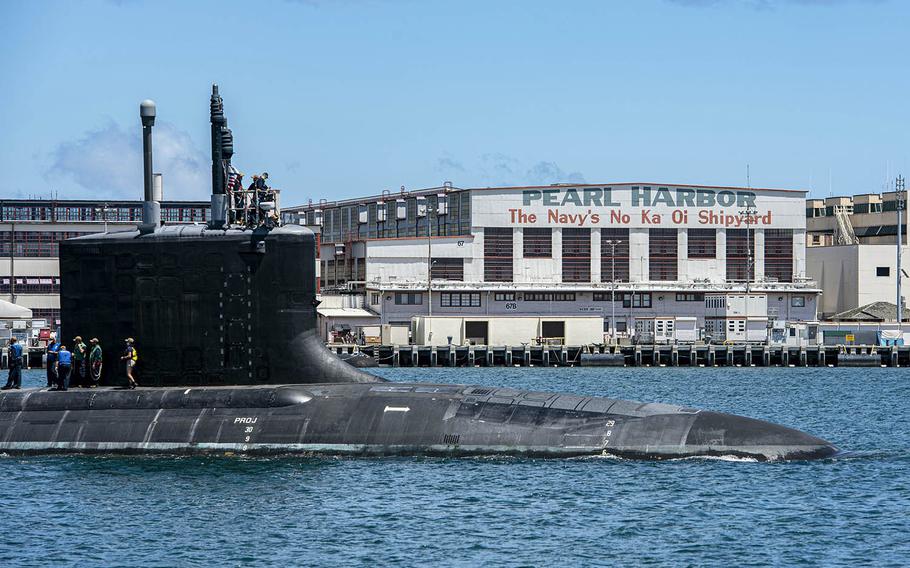The U.S. Navy's $166 billion Virginia-class submarine program continues to experience cost increases and "persistent problems" that are likely to force delays in delivery, according to a congressional watchdog's assessment of the Pentagon's $1.8 trillion weapons portfolio.
The potential 12-vessel "Block V" version of the nuclear-powered, fast-attack sub "is already costing more than expected, due in part to the same inefficiencies, such as inadequate staffing levels, affecting earlier blocks" of the submarine, the Government Accountability Office said Tuesday in its annual weapons overview.
The Block V is the latest in what's expected to be a 48-sub program that has broad support in Congress, but delays in earlier blocks are rippling through the program. COVID-19 issues that slowed production in 2020 as well as a less experienced workforce at manufacturers General Dynamics Corp. and Huntington Ingalls Industries Inc. share some of the blame, the report said.
From February to August 2020, for example, "delivery dates for eight of the 10 remaining Block IV submarines were further delayed by four months on average, though program officials stated that Block V has schedule margin to absorb some Block IV delays." The subs are typically bought at a rate of two per year.
Navy officials said "the overall increase in submarine workload and resulting increase of inexperienced new hires at both the suppliers and the shipbuilders, along with long-term challenges meeting staffing levels, are driving these unfavorable cost trends for both blocks."
General Dynamics and Huntington Ingalls are "mitigating these trends by shifting workers and re-allocating work tasks from different sites, and expanding hiring to add capacity," according to the Navy.
The Navy's program office told the GAO that it has reduced construction time by two years from the first Block I submarine, which dates back to the late 1990s.
Although efforts to deliver two submarines per year "has led to longer construction times, the program office expected this growth to be offset by reductions in post-delivery activities before the submarines enter service," GAO said. "The program also stated that quality is improving and submarines are delivered within budget."
The assessment of the Virginia-class program is the most noteworthy of 64 program evaluations in the GAO report. The annual review also warns of issues with programs not completing all required cybersecurity requirements, as well as potential delays in a new category of "mid-tier" acquisition programs the Pentagon favors because they show promise of being deployed more quickly than traditional "Major Acquisition Programs," such as the Virginia-class.
Overall, sixteen major programs in the Pentagon's weapons portfolio showed schedule delays since the GAO's 2020 report. That was due, in part, "to delivery or test delays and poor system performance," according to the study.
On a positive note, the now $398 billion F-35 jet being built by Lockheed Martin Corp. "reported an overall procurement cost decrease of $23.9 billion in fiscal year 2020, primarily due to lower prime and subcontractor labor rates," GAO said.
The F-35's performance drove an overall reduction in the cost of the Pentagon's weapons portfolio, but "excluding this program, quantity changes and other factors such as schedule delays contributed to one-year portfolio cost growth," GAO said.

A Virginia-class fast-attack submarine departs Pearl Harbor Naval Shipyard in Hawaii, May 10, 2020. (Amanda Gray/U.S. Navy)